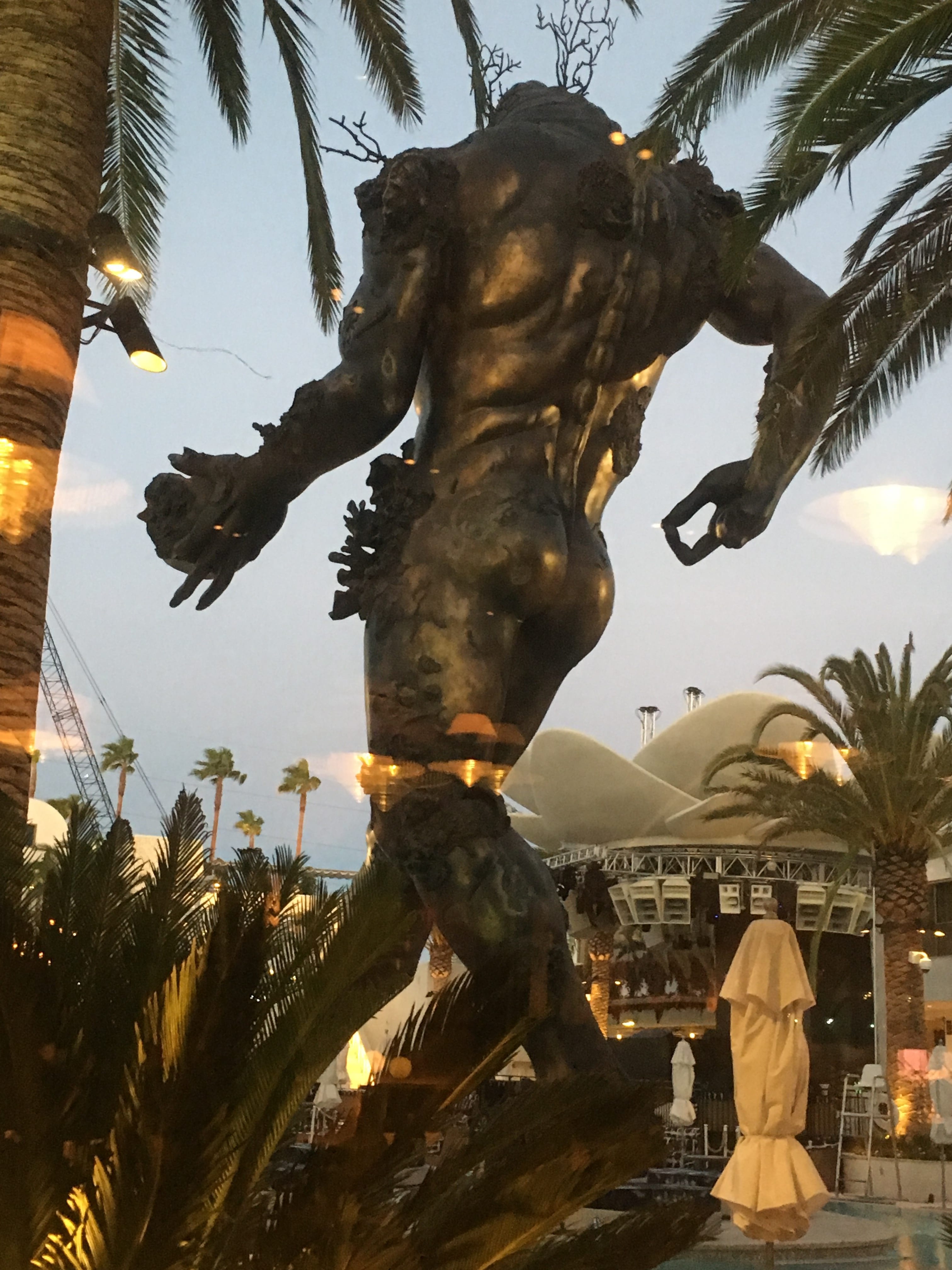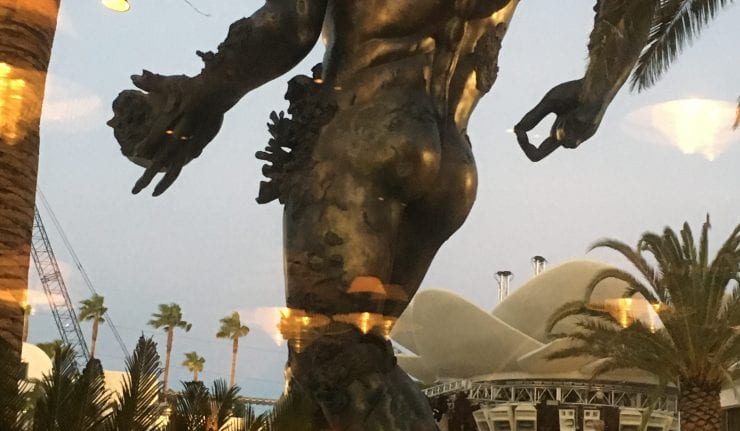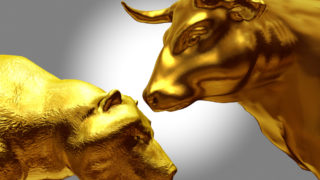Kevin O’Leary invests in modern art to diversify and to profit, but he is far from alone in focusing on pieces he and his wife truly enjoy in the hopes visual appeal is followed by the desired appreciation.
The goal for a modern or pop art investor is to buy items that will appreciate, while also enjoying the creations personally. O’Leary, a billionaire panelist on the “Shark Tank” television program in which he and other wealthy investors are pitched by entrepreneurs to fund the expansion of their businesses, enjoys collecting items he loves such as the best guitars, watches, wines and art that could be sold profitably later if he chooses.
“I have a pretty good art collection, but it is curated by my wife,” O’Leary told me when I met with him for an interview at the Palms Casino Resort as he shared wine and sushi with a small table of guests at the hotel’s Shark Bar, featuring a view of artist’s Damien Hirst’s nearly 60-foot headless bronze sculpture “Demon with Bowl.” The dramatic piece was part of an extravagant 2017 exhibition at collector François Pinault’s Palazzo Grassi museum in Venice, Italy.

“Demon With Bowl” by Damien Hirst; Photo credit: Paul Dykewicz
The Palms Casino Resort’s impressive art collection also includes Andy Warhol paintings, among many other contemporary artists. O’Leary offered his praise and expressed admiration for the hotel incurring the effort and expense to display the works.
“I’ve got a lot of stuff,” said O’Leary, who added it is a “real pain” to own it due to “crazy” insurance restrictions about how it can be displayed, the lighting that must be used to preserve the art work and other costly requirements.

Paul Dykewicz interviews “Mr. Wonderful” Kevin O’Leary at the Palms Casino Resort in Las Vegas; Photo credit: John Phillips
O’Leary Invests in Modern Art Such as a Warhol Print of Mick Jagger
Even though O’Leary, nicknamed “Mr. Wonderful,” said his wife loves Warhol’s art, it also is a “fully priced asset.”
One special Warhol print that O’Leary said he owns is a one-of-a-kind image of rock star Mick Jagger’s face in 1975. Warhol’s 10-print portfolio of Mick Jagger’s face in 1975 included an 11th print that O’Leary told me he owns.
“To make 10, he built a compilation to shoot to make the 10,” O’Leary said. “I own the compilation.”
O’Leary said he liked Warhol’s special print of Jagger and bought it in a “crazy negotiation” years ago.
O’Leary Invests in Modern Art with ‘Crazy Negotiations’
“I love those crazy moments where you are doing crazy negotiations,” O’Leary said.
“You walk away five times,” O’Leary recalled. “I said, ‘If I walk away an 11th time, I’m not buying this and I’m the only buyer you’ve got. I’m ready to pay cash tomorrow.’ I went to the can and my cell phone rang.”
The seller called to accept O’Leary’s offer and the deal was sealed. As much as O’Leary appreciates Warhol’s print of Jagger, he said “art is a terrible asset” due to headaches such as shipping and providing ultraviolet ray protection.
Jon Gray, general manager of the Palms Casino Resort, told O’Leary and me that he and his colleagues took special measures to protect the Warhol prints displayed there, including one in its steakhouse, and one of the late legendary singer and actor Elvis Presley that Is on display on the main level as people enter the property.
O’Leary Invests in Modern Art and Measures to Preserve It
In Las Vegas, where extravagance aimed at attracting buzz for casino guests and visitors is the norm, the Palms completed a full $690 million makeover in June 2019 and now offers arguably the most extensive art collection of any hotel in the world.
O’Leary spoke admiringly of various art pieces at the Palms, including a 1999 creation of British artist Damien Hirst called The Unknown (Explored, Explained, Exploded), featuring the head, body and tail of a shark in three sections. The work from Hirst’s Natural History series consists of a 13-foot-long tiger shark that is divided into three parts, each section suspended in a formaldehyde solution within a steel tank that measures more than two meters in height.
Hirst’s three-part shark is used as an attention-grabbing centerpiece of the Palms’ casino floor and is positioned in the middle of the venue’s center bar. The walls surrounding Hirst’s shark sculpture are adorned with 16 new spot paintings from Hirst’s “Pharmaceutical” series, which were created especially for the bar. Customers can sip crafted cocktails and contemplate the artwork of Hirst, who also designed the bar’s logo, napkins and cocktail stir sticks.
O’Leary the Investing ‘Shark’ Wants to Invest in a Damien Hirst ‘Shark’
“I should own the shark because I am a shark,” O’Leary told his other guests and me.
As far as investment value, O’Leary estimated the owners of the Palms could make 2,000 percent on the sale of the pieces they have on display.
Some of the pieces are owned by the hotel, while many others are on loan, Gray said. Much of the artwork on display at the Palms is available for sale, Gray added.
“The hotel is dripping with art,” O’Leary said. “The suite we were in today just blew me away.”
That 9,000-square-foot suite is the most expensive hotel room in the world. It is a two-story penthouse decorated with Hirst’s artwork that is called the Empathy Suite. The price to stay for one night is upward of $100,000.
The Palms also has three Warhol works on display, as well as many pieces from artist Jean-Michel Basquiat.
O’Leary said the Palms has large enough surface space and a willingness to display big art installations.
O’Leary Invests in Modern Art but One Buyer Paid $90 Million for a Portrait
Christie’s auctioned the portrait of an Artist (Pool with Two Figures) by David Hockney, on November 15, 2018, for $90 million, making it the most expensive artwork sold by a living artist, according to London-based valuations firm Knight Frank.
For art lovers seeking to buy pieces that could appreciate more than the stock market, Leon Benrimon, director of Modern & Contemporary Art, of Dallas-based Heritage Auctions, said, “The general rule of thumb is to buy what you love because art is not supposed to be looked at as an investment. People in general want you to fall in love with the artist, the work and the concept.”
However, art can become an investment with certain artists and genres that can appreciate more than the S&P 500 and other indices, Benrimon told me in a phone interview. Such buyers need to choose wisely, he added.
“If you don’t pick the right ones, you’ll be the one left with it on your wall looking at it every day,” Benrimon said.
Instagram May Signal Modern Art with Potential to Appreciate
One client of Heritage Auctions tracks the modern artists and genres that receive the most attention on Instagram to make decisions about what to buy that offers the best potential to appreciate, said Benrimon, who is based in Beverly Hills, California.
“Investment value is certainly present and on people’s minds,” Benrimon told me.
“Buyers should beware not to become overconfident based on “initial hype or influx in value,” Benrimon said. “The question is: will it last?” he added.
If the artist remains alive, a key question is whether he or she will adapt to the trend of the times to build upon current popularity, Benrimon said.
An example of an artist who stayed relevant throughout his career is Spanish-born Pablo Picasso, who became one of the most influential creators of art in the first half of the 20th century, Benrimon told me. Picasso started with his Blue and Rose periods, when painting in a singular color was an important idea in art history. Then, Picasso entered into the cubist works movement by divesting the form and the figure from the canvas, Benrimon said.
Appreciation is Rising for Certain Urban, Street and Graffiti Art
The category of Urban, Street and Graffiti art has been “robust” by rising in value during recent years, Benrimon said.
In fact, demand for Urban, Street and Graffiti art grew five-fold in just the last two years at Heritage Auctions.
The first auction of Urban, Street and Graffiti art held by Heritage Auctions generated $270,000 for the sale of 270 lots. It averaged $1,000 per object and marked the only auction of that genre of art in 2017.
The most recent auction of Urban, Street and Graffiti art totaled eight times that amount to reach $2.7 million for 600 lots, quadrupling the average lot value to $4,000 per object, Benrimon said.
This year, Heritage Auctions is scheduled to hold four auctions of Urban Art in addition to its weekly Wednesday Prints and Multiples Auctions, which frequently feature Urban Art.
“The growth has been staggering,” Benrimon said.




